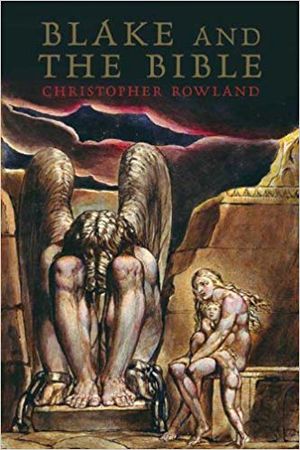Blake and the Bible (2010 Rowland), book
Blake and the Bible (2010) is a volume edited by Christopher Rowland, et al.
Abstract
"The Bible was crucial for William Blake and for his poetic genius, whether as an object of criticism or as an inspiration. This book-the first substantial study of the topic in sixty years-locates Blake within the broad spectrum of Christian biblical interpretation and explores the ways in which Blake engaged with the Bible. Christopher Rowland argues that Blake's approach to the Bible was broadly consistent, even though he underwent something of a religious change in his later years. The author also shows how Blake saw himself as being in the prophetic tradition and also as somehow continuing the work of John of Patmos, author of the Book of Revelation."--Publisher description.
Editions
Published in London [England] and New Haven, CN: Yale University Press, 2010.
Contents
The old and new testaments are 'the great code of art' -- 'Thus did Job continually': the biblical hermeneutics of Blake's Job engravings: part I -- 'But now my eye seeth thee': the biblical hermeneutics of Blake's Job engravings: part II -- Exploring the contraries in divinity -- Blake and 'the Bible of hell': the marriage of heaven and hell, the first book of Urizen and drawings for the book of Enoch -- 'Would to God that all the Lords people were prophets' -- William Blake and the radical interpretation of the Bible: Gerrard Winstanley, Abiezer Coppe, Ralph Cudworth, and Hans Denck -- 'From impulse not from rules': Blake and Jesus -- Antinomianism, atonement and life in the divine body: Blake and Paul -- Interpreting the Bible through images -- Blake and biblical interpretation: some concluding reflections -- Appendix I: Extract from William Blake's Notebook, "The Everlasting Gospel" -- Appendix II: The design of the last judgment.
